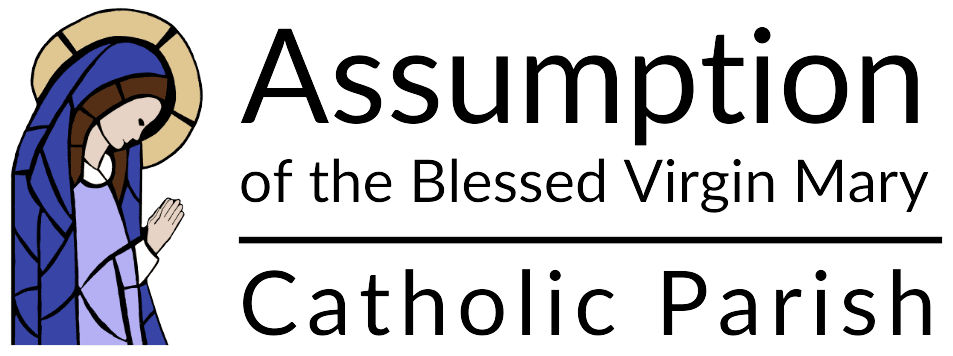February 2, 2025
Today, we celebrate the Feast of the Presentation of the Lord. We celebrate this feast every year on February 2, 40 days after the celebration of Christmas Day. On this day, we remember when Jesus entered the Temple for the first time, in fulfillment of the Jewish law found in the Torah.
There is evidence that this feast was first celebrated in Jerusalem on February 14 each year (40 days after the celebration of Epiphany, the day that Christ’s birth is celebrated in the Eastern church) beginning around the year 400. It was originally celebrated as “The Feast of the Meeting.” By the middle of the 5th century, it was also being celebrated in Rome on February 2 (40 days after Christmas Day), and therefore throughout the entire Church, both East and West. In Rome, the feast was celebrated with a candlelight procession due to the quote from Simeon in this week’s Gospel that Jesus is “a light for revelation to the Gentiles.” (Luke 2:32) Eventually, the feast became known popularly as Candlemas (“Candle Mass”) Day.
When February 2 falls on a Sunday as it does this year, the Feast of the Presentation of the Lord is celebrated in place of the usual Sunday in our current liturgical season of Ordinary Time. This only occurs every 5 or 6 years. The Roman Missal gives the option for Mass to begin with the blessing of candles and candlelight procession by the entire assembly into the nave of the church on this day, therefore we will begin Mass this weekend in Holy Grounds and process together with candles. We will also sing a traditional Christmas carol (“What Child Is This?”) at the Presentation of the Gifts to highlight that the Presentation of the Lord is one of two days on the Church liturgical calendar outside of the Christmas Season (which extends from Christmas Eve through the Feast of the Baptism of the Lord) with a direct connection to the mystery of the Incarnation of Jesus—the other being the Solemnity of the Annunciation of the Lord which is celebrated 9 months before Christmas Day each year (March 25).
In our Monday evening and Wednesday afternoon book study on the book Behold, Believe, Become by Timothy O’Malley which everyone who attended Mass during the Christmas Season received, we recently discussed the meaning of a liturgical procession. One of the Monday evening participants noted these surprising sentences, “The ritual walking functions as an invitation to deeper meditation on the meaning of Eucharistic worship. The procession is both playful and serious.” It is fairly clear why liturgy is serious. Liturgy is a celebration of God redeeming us through the death and resurrection of his Son, offering us a share in God’s own divine life, which is eternal life. What can be more serious and worthy of reverent, wholehearted participation! But what could Dr. O’Malley mean when he refers to the liturgy and liturgical processions as playful?
At first, I remembered the scene from A.A. Milne’s Winnie the Pooh where Christopher Robin gathers his friends to lead them on an expedition to the North Pole. “The Expedition started. First came Christopher Robin and Rabbit, then Piglet and Pooh; then Kanga, with Roo in her pocket, and Owl; then Eeyore; and, at the end, in a long line, all Rabbit’s friends-and-relations.” As they walked, Pooh began to sing a song he made up. They are all walking and singing, with a purpose (to discover the North Pole). This may seem like childish folly, but as Fred Rogers once observed, “Play is often talked about as if it were a relief from serious learning. But for children play is serious learning.” When children play, they are learning how the world works, simultaneously using their bodies and imaginations to make connections, learning to navigate the matrix of relationships that comes with sharing, living adventures. For those who choose to enter into liturgy like playful children (Matthew 18:3), do we not also learn how to gratefully receive and steward the gift of divine life (Grace) given to us through the sacraments, using our bodies, lifting up our minds and hearts to God as a sacrifice of praise, connected with the community of faith, hope, and love (Church), living the greatest adventure, a pilgrimage in and toward the Kingdom of heaven through ritual actions, song, and Word?
In our busy world, filled with what theologian Romano Guardini called “superficial eventfulness,” the measured pace of liturgy and procession remind us that some things in life, perhaps the most important things, do not have a utilitarian purpose that make them meaningful. Like the playing of a child or the embrace of lovers or the creative work of an artist, these actions are good, beautiful, and worthwhile in themselves. Liturgical worship is like that for in the experience of liturgy, “the soul exists in God’s presence, originates in Him, lives in a world of divine realities, truths, mysteries and symbols, and really lives its true, characteristic and fruitful life.” (Guardini, The Spirit of the Liturgy)


